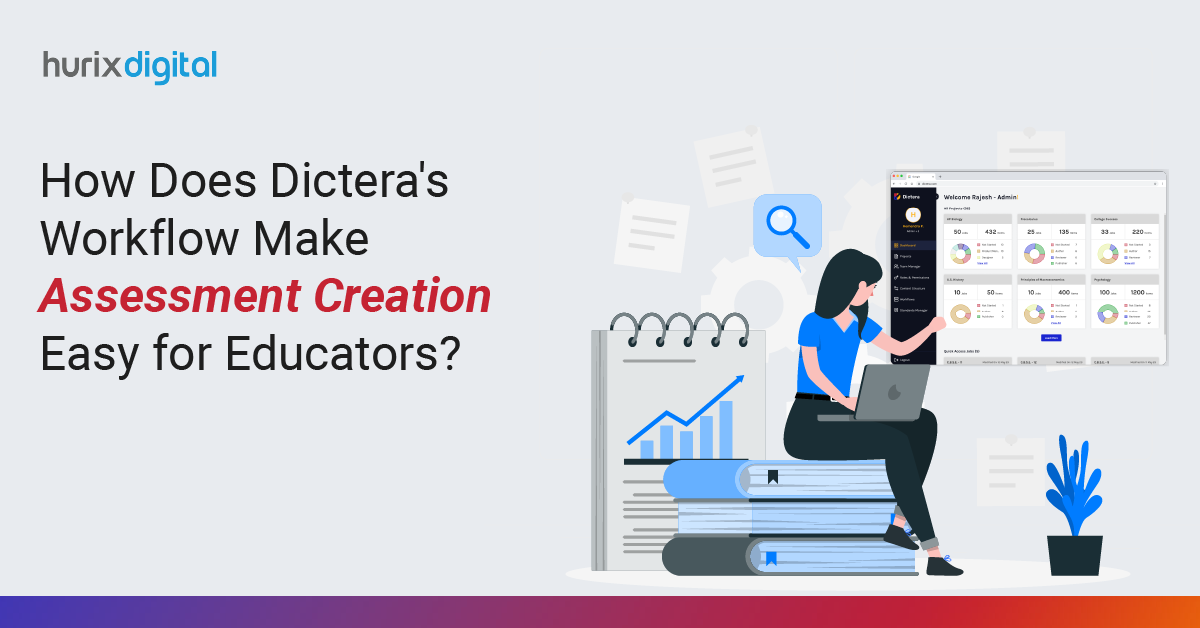
Exploring the Potential of Digital Assessment Tools in Education
Summary
This article explores the potential of digital assessment tools in education, highlighting how they enhance assessment accuracy, feedback, and student learning outcomes.
Digital assessment tools help educators assess students efficiently and effectively. Since the COVID-19 pandemic, a large number of educational institutions and providers shifted to a digital basis.
Education technology solutions rapidly developed, leading to a plethora of available tools for the different facets of digital education. The ed-tech industry is projected to reach a value of more than $319.65 billion by 2029.
There are several digital tools available that enable educators to create assessments, grade them, and distribute assessments online.
Table of Contents:
- Why Use Digital Assessment Tools?
- Types of Digital Assessment Tools
- Ways to Use Digital Assessment Tools
- Summing Up
Why Use Digital Assessment Tools?
Digital assessment tools form an integral part of remote learning. Compared to pen-and-paper assessments, these tools save time and make the assessment process more efficient. They also allow for more standardized and streamlined assessments.
With digital assessment, educators or teaching assistants can provide instant feedback to students. For example, specific digital tools allow students and teachers to add comments. They can help track learner performance. Students can precheck assignments before submitting them, which saves teachers time spent grading.
Digital tools make assessment more convenient for educators compared to pen-and-paper grading. Using these tools, educators can avoid stacks of papers on the table and the hassle of losing tests or assignments and taking all the assignments home.
It also makes it more convenient for students. Students can get answers to their questions promptly, and their activity can be tracked by teachers accurately. Finally, digital testing can be fun and engaging for students with gamified processes. This boosts student involvement and participation.
Types of Digital Assessment Tools
There are two main types of digital assessment tools. These are explained below.
1. Formative Assessment Tools
These are used during an ongoing lesson or topic and help teachers track, assess, and guide the student’s learning process. They include quizzes, assignments, in-class questions, and discussions.
2. Summative Assessment Tools
These tools are used once the instruction is complete and are usually used to assess student learning by comparing the performance to a benchmark. They include final essays and tests given at the end of a course, module, project, semester, or academic year.
These are usually more important exams that carry higher weightage in the student’s grades.
Ways to Use Digital Assessment Tools
There are different ways to use digital assessment tools, and the different kinds of tools perform various functions.
1. Gamify the Assessment
Gamifying the assessment is a great way to make it more engaging and increase student motivation with interactive course content. The global market for gamification strategies is projected to reach $58.8 billion by 2028, with education emerging as the top segment.
Some of the elements you can add to gamify the assessment include points and rewards. Digital assessment tools allow teachers to use existing games on the platform or create multiple-choice questions. The teachers can also upload files and images to create a unique game or use the ready-made games provided.
Gamifying the assessment helps create a shared learning experience. Although the students work individually on their computers, it can take place as a group activity: the questions can be displayed on a shared screen and discussed. This allows learners to benefit from group learning and a competitive element while performing the assessment and passing the test.
2. Provide Instant Feedback
Providing prompt and concise feedback is a great way of speeding up and simplifying the learning process. It also makes it more participative and engaging. Allowing students to receive feedback during the learning process itself enables them to absorb feedback more effectively and connect it with specific aspects of the lesson.
Digital assessment tools can enable you to provide quick feedback to a group of learners through question-answer interactions. The teacher shares a question with the class, and students can either prepare an answer or select one from multiple choices provided by the teacher. The teacher can then provide feedback on the answers immediately.
Digital assessment software has multiple features that educators can use. These include activities, quizzes, quick questions, and more. These features allow educators to assess a student’s learning on an ongoing basis in real-time. Further, students can receive feedback as they proceed through an exam.
Teachers can easily create quizzes and share them with other teachers using digital tools. They can also monitor students’ grades and adjust their feedback based on students’ progress.
3. Track Progress
Digital assessment tools can help you track your student’s progress. They also enable learners to track their progress. This is a great way to monitor student’s learning process and understand exactly where they are.
Digital assessment software can provide useful data that teachers can use to assess students. It can also make the studying process easier for students and allow them to track correct and incorrect answers.
For instance, certain digital tools allow the teacher and students to have shared access to reading material assigned to students as well as written assignments and track students’ progress on the document.
4. Create Assessments Easily
With the help of digital tools, you can easily create assessments for your online course in quick and streamlined ways. Such tools enable you to create multiple-choice questions in the form of a survey in a few minutes. You can also enhance the questionnaires with images and videos.
In addition to multiple-choice questions, you can use digital assessment technology to create quizzes with questions that require typed answers. Further, you can have leaderboards that introduce an element of friendly competition between students.
Animated leaderboards make for a more engaging and fun experience. You can also award extra points for the quickest answer.
Summing Up
Digital assessment tools offer a variety of ways to simplify and improve your assessments of students, leading to more effective and engaging learning processes. These include gamifying the assessment, providing instant feedback, tracking progress, and creating assessments quickly.
These tools help make the assessment process quicker, more streamlined, and more convenient and effective for teachers and students.
Hurix Digital offers e-learning solutions and content development for higher education. It designs learning experiences for educational institutions and businesses and helps them develop and deliver competency-based education. It also offers learning consulting and recommends solutions based on business requirements.
Get in touch with Hurix Digital today!
Also Read – Top Benefits Of Digital Assessment Tools for Teachers

Passionate about developing innovative business models for customers in the content space. Primarily focused on the markets: US, UK, Europe, Middle East and APAC with 18 years of experience. Focused on collaborative working with internal teams such as Technology, Operations, Finance, and Marketing to ensure the voice of the customer is in everything that the company builds.







